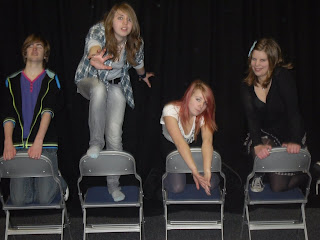I have now finished my music magazine, and I am going to write my evaluation for my blog.
My media product was a music magazine based mostly on indie music. Both of these concepts determined the appearance of my magazine.
A typical music magazine with have a mast head to distinguish it from any other magazine. Usually it will be in bold and often have a coloured background. Another thing magazines usually have is a barcode, price and issue date and they are all usually close together. These are also almost always a large main image of an artist of band with a banner near it to tell the reader what the main story is about. The cover lines tell the reader about stories and articles that will be inside the magazine and will sometimes tell you what page it’s on so that the reader can find it easily. The colour scheme used is based on what genre of music will be featured in the magazine. For example, a rock magazine will usually be dark colours like black. If it were a pop music magazine it would be bright vibrant colours. This is so that the magazine with relate and appeal to the buyer.
A typical contents page will have two clear columns and a list of what will be in the magazine and the page numbers so the reader can find the page they want quickly and easily. I have kept the same colour scheme as in the front cover and used blue lines to separate the page. I used a yellow font to write the page information and I used red to write an editors welcome that is also found in some magazines. There are also usually pictures that relate to some stories but there are never more than three. The pictures shouldn’t over power the text. I have used only two images, one of a story inside and one of the front cover which is also a typical magazine trait. This is to tell the readers where the story from the front is inside the magazine.
On a typical double page spread there are also the noticeable two column pages that are in the contents page which often go around or under pictures. I have chosen to have three images, one larger than the others to draw more attention to it. I chose three because I didn’t want to overpower the text. The text sticks to the colour theme for my other two pages. Another thing that a normal double page spread would have is page numbers; I have put these at the bottom of the page in the centre. For this page I used the idea of readers writing in and asking the band questions themselves. This would make the readers more interested and may make them want to read the magazine more.
My magazine represents and is aimed at teenagers and people in their twenties. It covers all sorts of music but mainly indie and because it’s made to cover most genres of music that makes my audience range wider. I took this inspiration from Q as it doesn’t have a set audience. It covers more than one genre of music. This means I could have had a rock pop artist on the front cover and would have allowed me to have a DJ or a metal band inside. I have used casual speech in my magazine to relate to the younger readers and because my double page spread is an interview it allowed me to use in-formal language from the artists. The pictures I have taken show a fun yet glamorous side to the bands.
My magazine may be published by a company like IPC, who also publish NME or possibly the Bauer Media Group who publish Q. However, Bauer Media Group may not want two magazines that cover a wide genre of music.
My magazine is targeted at 16-25 year olds. I made it £1.99 so that it would be affordable for mainly students. It is for people who enjoy and appreciate music on a day to day basis.
To attract my audience I used a large main image of a singer from a band which will attract the readers to the magazine. I also used interviews with loads of artists to draw in the attention of readers. Also, one of the main stories that is featured on my double page spread is an interview where I have included questions from the readers themselves. This would also attract the attention to the readers. I used bright yet simple colours to make the magazine stand out but not look too busy. It looks bright and exciting and youthful.
I used Microsoft Publisher to create most of my magazine. I also used GIMP to edit my images and my mast head. I also used a digital camera to take my pictures and I also used Corel paint pro X to edit my group photos.
I think that I have improved most at making my product look more appealing and professional. I have also improved my computer skills in learning how to use GIMP. I think my magazine looks as professional as I can make it and it think it looks effective and that people would buy it.






















